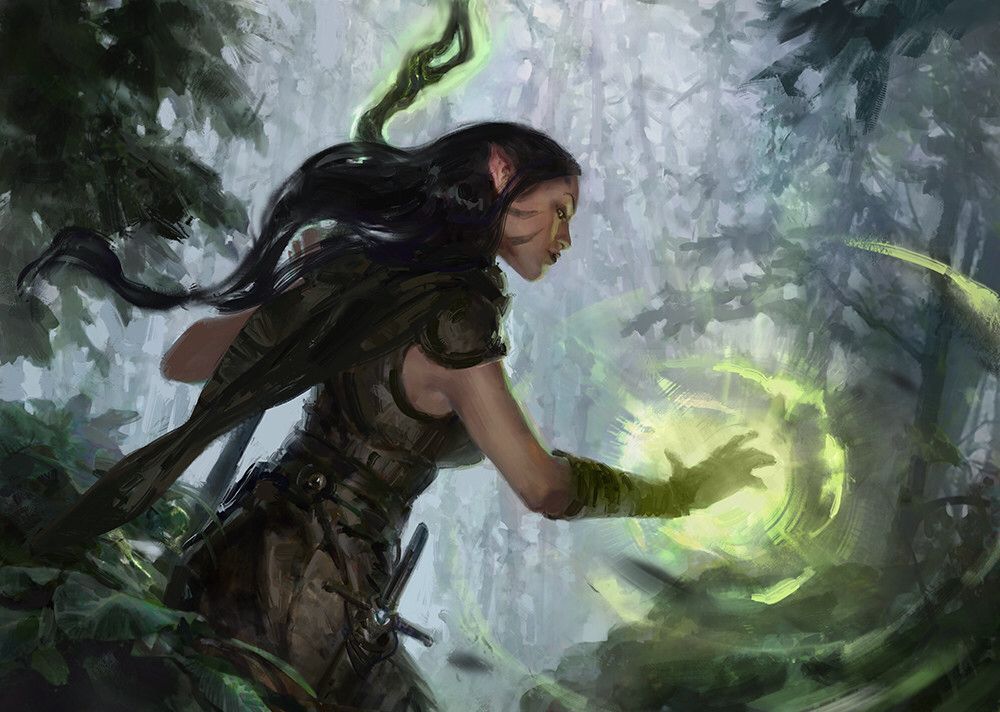Difference between revisions of "Cantrip"
Tao alexis (talk | contribs) |
|||
| (14 intermediate revisions by one other user not shown) | |||
| Line 1: | Line 1: | ||
| − | '''Cantrips''' are | + | [[File:Cantrip.jpg|right|560px|thumb]] |
| + | '''Cantrips''' are minor magical incantations that produce beneficial, albeit generally non-threatening effects. Nonetheless, they are similar to [[Spellcasting|spells]]. Nearly all cantrips have a 10 ft. range and require less than a full round to cast. Only one may ever be cast per [[Combat Round|round]], and never in the same round that a spell is either cast or discharged. Cantrips very rarely require concentration. | ||
| + | __TOC__ | ||
| + | The understanding of this magic is often the initial foray of a [[Character Class#Class Training|student of magic]] in casting; most, even if they haven't graduated to an [[Experience Level|experience level]], possess a few cantrips or more. As they progress through their [[Mage Apprentice (profession)|apprenticeship]], one typically gains a cantrip every 5 to 8 months, and some even faster. | ||
| − | All | + | == Types == |
| + | Cantrips are divided into seven types: | ||
| + | |||
| + | * [[Haunting Sound Cantrips|Haunting Sound]] | ||
| + | * [[Illusionary Cantrips|Illusionary]] | ||
| + | * [[Legerdemain Cantrips|Legerdemain]] | ||
| + | * [[Person-affecting Cantrips|Person-affecting]] | ||
| + | * [[Personal Cantrips|Personal]] | ||
| + | * [[Reversed Cantrips|Reversed]] | ||
| + | * [[Useful Cantrips|Useful]] | ||
| + | |||
| + | |||
| + | All of these are available to [[Illusionist (class)|illusionists]]. Six types may be used by [[Mage (class)|mages]], the exception being illusionary cantrips. | ||
| − | |||
| − | |||
| − | + | See also,<br> | |
| + | [[Illusionary Cantrip Tables]]<br> | ||
| + | [[Magical Cantrip Tables]] | ||
| − | + | [[Category: Cantrips]][[Category: Reviewed]] | |
Latest revision as of 20:45, 19 February 2024
Cantrips are minor magical incantations that produce beneficial, albeit generally non-threatening effects. Nonetheless, they are similar to spells. Nearly all cantrips have a 10 ft. range and require less than a full round to cast. Only one may ever be cast per round, and never in the same round that a spell is either cast or discharged. Cantrips very rarely require concentration.
Contents
The understanding of this magic is often the initial foray of a student of magic in casting; most, even if they haven't graduated to an experience level, possess a few cantrips or more. As they progress through their apprenticeship, one typically gains a cantrip every 5 to 8 months, and some even faster.
Types
Cantrips are divided into seven types:
All of these are available to illusionists. Six types may be used by mages, the exception being illusionary cantrips.
